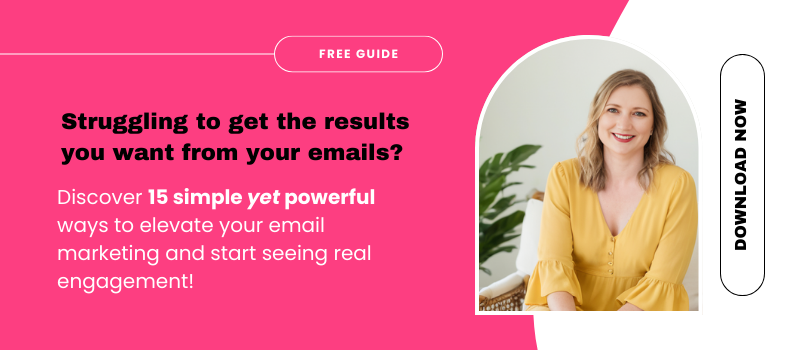Struggling to get the results you want from your emails?
Discover 15 simple yet powerful ways to elevate your email marketing and start seeing real engagement!
Grab your freebie!
Blog Categories
Helping small business owners, virtual assistants, and creative entrepreneurs grow their business.
Hi, I'm Tara! I'm a multi-passionate business and marketing coach.
learn more + get a copy:
Last Updated on October 13, 2025 by Tara Reid
Content marketing is one of the most essential parts of any digital strategy. It helps you build brand trust and attract new visitors to your website. In this blog post, we’ll cover some of the best practices for creating content that will help you get started with your new strategy. From research to execution, these questions can help you plan your content strategy, so it begins with an end goal in mind and a clear path forward.
Disclaimer: I earn from qualifying purchases. Some of the links on my website are affiliate links, which means, at no additional cost to you, I will earn a small commission if you click through and make a purchase.
Planning your strategy isn’t something that happens overnight. It takes time to think through every detail, from researching target keywords to laddering your content, so every piece is relevant and useful at any given moment. Consider these 5 questions as a starting point when planning your content strategy:
Questions to Ask When Planning Your Content
What is the goal of my content?
The first question you should ask yourself before creating a piece of content is what your end goal is. Do you want to attract more visitors or users, generate leads for your business, increase brand awareness, or increase click-through rates for your banner ads? Without that specific information, it isn’t easy to know what type of content will actually help you reach your goal.
How can I best use this strategy in my digital marketing campaign?
Before creating any content, think about how it can be used in your digital marketing strategy. There are several different ways to do this, from creating blog posts to building landing pages and social media campaigns. The more specific you can be with the details of how the content will be used and who it will target, the more effective it will be in achieving its goals. What works best depends on the type of content and audience you’re trying to reach.
What types of topics should I avoid?
It’s easy to fall into an endless cycle when brainstorming ideas for blog posts: write something about every available topic and hope something sticks out as a hit. But there are certain topics that aren’t likely to produce fruitful results for your business’s bottom line (or anyone else’s). Avoid these topics if possible, so you don’t waste time on content that never takes off.

1) Who is my ideal audience?
This is the most critical question to ask when planning your content. Writing content that will resonate with that audience without knowing who you want to target is challenging. So, let’s take our example from before and say your ideal customer is a single African-American man between 23-35 years old who makes at least $35,000 a year. You need to know what topics are interesting to this person to craft a blog post or video that will be appealing and helpful for them.
There are many different ways you can find information about your audience. For social media marketing, you could use Facebook’s insights module to get demographic information about your fan base daily, or you could analyze your website analytics data over time to see which topics are trending among your audience.
To make the process easier for yourself, use tools like Google Trends or Answer the Public to search for popular keywords related to topics of interest in order to find articles related to those topics so you can research more easily on your own time.
2) How does this content help them?
This is one of the most important questions to consider when planning your content. By asking yourself how your content will help your readers, you can better understand the content’s value and tailor it accordingly. For example, a blog post could be about how to improve web design while providing links to resources that can help users. Or a white paper on how to create an effective digital marketing strategy could provide information on tools and platforms they can use while directing them to other white papers and articles for more information. This means that if someone links to your article, they might also see relevant content that will come up in their search results and find out more than what was posted in the article.
Instead of just posting something because you want people to read it and respond, think about why the content is necessary for your audience and create amazing content tailored to those needs!
3) What is my goal for this content? What action do I want people to take?
This is the big question! It’s important to have a clear goal for each piece of content. Is your goal to increase website traffic? Get in touch with influential people in your industry? Increase sign-ups for a program? The goal should be specific and direct so that you can stay focused on what you want to achieve.

4) Does this content fit with my brand values?
Your content should be relevant to your brand and reflect your values. If you’re a small business with a young target demographic, you might want to focus on humor and entertainment for the holidays. If you’re a company specializing in supporting older individuals, you might want to focus more on expert advice during the holiday season.
Before diving head first into creating your content strategy, ensure you know what type of content fits best with your brand’s mission statement and values. This way, you’ll know what words not to use when describing yourself as well as what tone to use in each piece of content. So take some time and think about where your target audience is coming from before considering the types of content they will enjoy.
5) Do I have content I can repurpose?
Repurposing content is one of the most important aspects of content marketing. Some companies have a lot of original content, while others might need to start from scratch. The key is reusing your existing content, so you don’t have to create new content every time. If you’re not sure about this question, consider reusing your blog posts or any other type of content that you have created in the past.
If you don’t have any original content on hand, think about whether there are resources within your company that could be repurposed for future use. Maybe there’s some information from an internal newsletter or brochure that could be used again and again.
For example, an article from last year’s annual report might be a good candidate for repurposing into this year’s annual report instead of creating brand new content in which everything will change every year.
There are also some great sources for free templates and other valuable resources regarding repurposing content. Google has an excellent repository of templates and tools to help make your old blog posts and website pages more engaging.

How to Make Content Creation a Little Easier
Let’s say you want to create content to help your business reach a new audience. That’s great, and it can help increase your traffic and conversions. But let’s say making content is still a little daunting. You have so many ideas for articles, but the process of creating them all seems overwhelming. What should you do?
One way to make creating content easier is to look at what already exists on your website.
For example, if you sell products online and have an e-commerce store, it would be great if you could use your site as a content hub. If your product pages are well-thought-out, detailed, and provide information about the product in a way that makes sense for the buyer, then you can use those product pages as templates for writing blog posts or other forms of content.
For example, suppose someone is looking for a pair of sneakers they saw on your website recently and goes to search through your sales copy or reviews on social media sites like Facebook or Instagram. In that case, they’ll find the same helpful info in terms of size and color options right there on their screen. This saves time because people don’t have to search multiple places or remember anything specific.
Tara Reid is a multi-passionate business and marketing strategist for introverted entrepreneurs who want to grow without relying on hustle culture or social media. With 18+ years of online business experience, she helps course creators, service providers, and digital product sellers build sustainable businesses through evergreen marketing, blogging, SEO, Pinterest, and email.
As the founder of the Introvertpreneur Club, Tara’s mission is to show heart-centered entrepreneurs that you don’t have to be loud to be successful. You just need the right strategies that fit your personality.
When she’s not supporting clients or creating new resources, you can find her at home in Canada with her three rescue dogs, a cup of coffee in hand, dreaming up her next project.
The Introvertpreneur Podcast
listen in to the top rated business podcast that is designed for introverted entrepreneurs who want to grow + scale in a more sustainable and fun way!
Top rated podcast
This one's on me. Complimentary free stuff coming right up.
leaving so soon?
Look behind the curtain and see exactly what I do every week, month, and quarter, to market my business without social media (in under 5 hours per week)!
The Quiet Marketing Playbook
Take this free quiz and learn what your superpower is as an entrepreneur. You'll also get a curated list of my best resources and tips for using your superpower to your advantage!
What's your Introverted Superpower?
Best Free Resources:
dig into 'em now!
A business strategist and marketing coach who focuses on helping course creators, coaches, and service providers, build sustainable businesses without social media.
